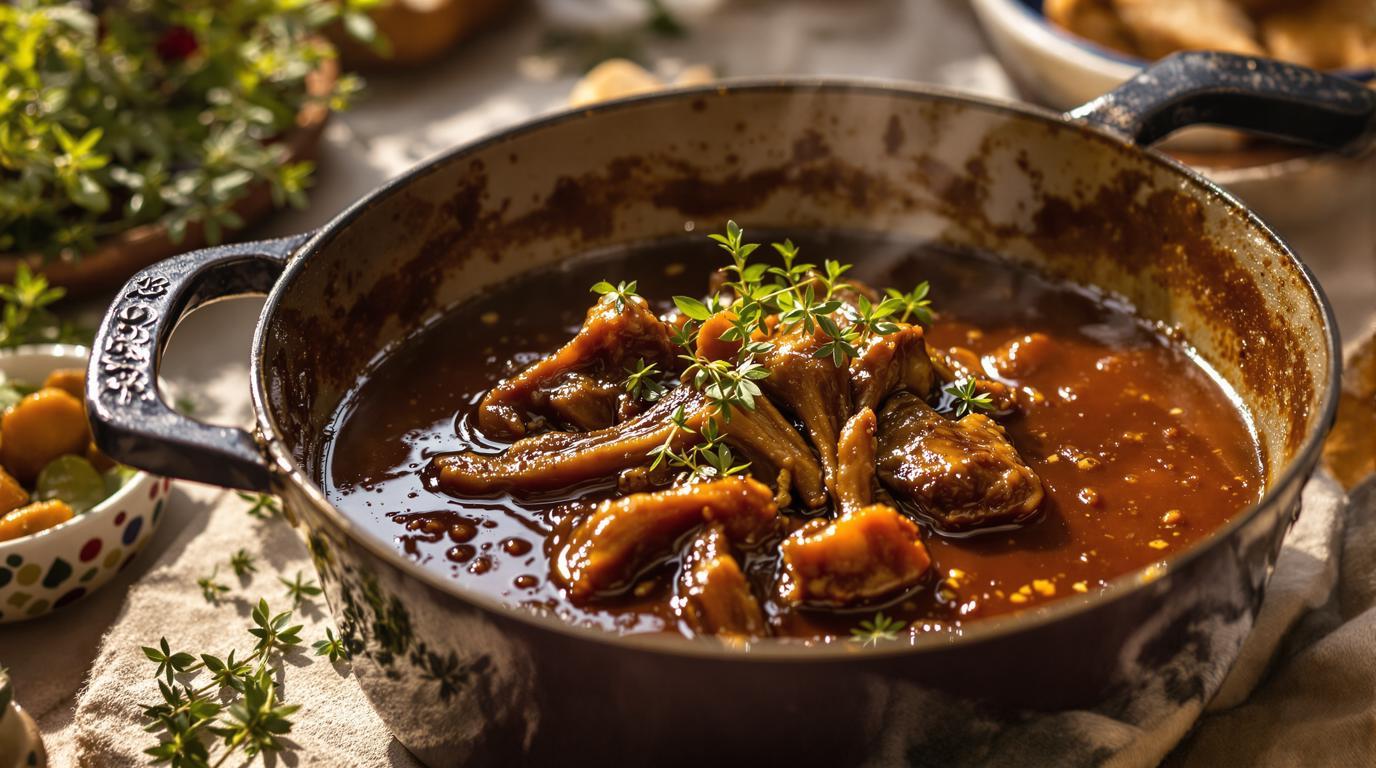There’s something magical about French culinary foundations that has always captivated me. When I was just starting out in my first professional kitchen, the executive chef pulled me aside one afternoon and whispered, “Alex, today I’ll teach you the secret to every magnificent sauce.” That day, I learned to make glace de viande—the intensely flavored meat glaze that professional chefs have treasured for centuries. This concentrated essence of pure beef flavor is what separates good cooking from truly exceptional cuisine, and today I’m sharing my perfected method with you.
The Culinary Gold of French Kitchens
Glace de viande isn’t just a sauce base—it’s liquid culinary gold. This intensely concentrated reduction transforms ordinary dishes into extraordinary ones with just a spoonful. While making it requires patience, the process is surprisingly straightforward and the rewards are immeasurable.
The magic begins with properly roasted bones. I still remember my grandmother explaining, “The color of your roast is the color of your sauce.” She was right—those deeply caramelized bones create the foundation for the rich mahogany color and complex flavor profile we’re after.
Gathering Your Ingredients
For approximately 500ml of finished glace de viande, you’ll need:
- 2kg (4.4lbs) beef or veal bones (knuckles, neck, and marrow bones work beautifully)
- 300g (10.5oz) beef shank or oxtail for extra gelatin
- 2 medium onions, roughly chopped
- 2 large carrots, roughly chopped
- 1 celery stalk, roughly chopped
- 30g (2 tablespoons) tomato paste
- 1 tablespoon black peppercorns
- 1 fresh thyme sprig (or 1 teaspoon dried)
- 1 bay leaf
- 5 liters (5.3 quarts) cold water
The Transformation Process
Creating glace de viande is a labor of love that unfolds in distinct stages:
- Roast the Bones and Vegetables: Preheat your oven to 200°C (390°F). Arrange the bones and vegetables on a large baking sheet and roast for 40-50 minutes, turning occasionally, until deeply browned but not burnt. This crucial step builds the foundation of flavor.
- Create the Stock: Transfer everything to a large stockpot. Add the tomato paste, herbs, and peppercorns, then cover with cold water. Bring to a gentle boil, then immediately reduce to a bare simmer. This is where patience becomes virtue—allow this mixture to simmer for at least 12 hours, skimming the surface hourly to remove impurities.
- Strain and Clarify: Line a fine-mesh sieve with cheesecloth and strain your stock. Take your time here—rushing this step could cloud your final product.
- The Reduction: Transfer the strained stock to a wide, heavy-bottomed pot. The wider the surface area, the faster and more evenly it will reduce. Maintain a gentle simmer and reduce until the liquid coats the back of a spoon with a syrupy consistency—approximately 1-2 hours.
Chef’s Note: The final stage of reduction requires vigilant attention. As the glace concentrates, it can burn quickly. Lower the heat progressively and stir more frequently in the final minutes. When it’s ready, it should have the consistency of warm honey and a rich, glistening appearance.
Preserving Your Culinary Treasure
Once your glace has reached the perfect consistency, pour it into small containers or ice cube trays. Once cooled, it can be refrigerated for up to 3 months or frozen for 6 months. I like to freeze mine in tablespoon-sized portions for easy use in everyday cooking.
Just a small amount will transform an ordinary pan sauce into something spectacular. Try adding a teaspoon to finish slow-cooked pork, enriching the base of chilled gazpacho, or elevating a simple Mediterranean bean salad to new heights.
Regional Variations Worth Exploring
In Alsace, many chefs add a splash of red wine during the final reduction, which introduces a subtle fruit note. In Southern France, you’ll often find a mix of beef and chicken bones for a more layered flavor profile. I’ve even seen innovative chefs incorporate a honey-balsamic reduction for a modern twist on this classic.
Don’t have beef bones? You can substitute a combination of chicken carcasses and pork trotters, though the flavor profile will be lighter. The principle remains the same—slow extraction of flavor followed by careful concentration.
My culinary journey has taken me through kitchens around the world, but I always return to these fundamental techniques that transform humble ingredients into something extraordinary. Like the simple magic of transforming berries into a frozen treat, the process of creating glace de viande reminds us that patience and attention to detail are the true secret ingredients in cooking. Master this foundation, and you’ll forever change the way you approach sauce-making in your kitchen.
